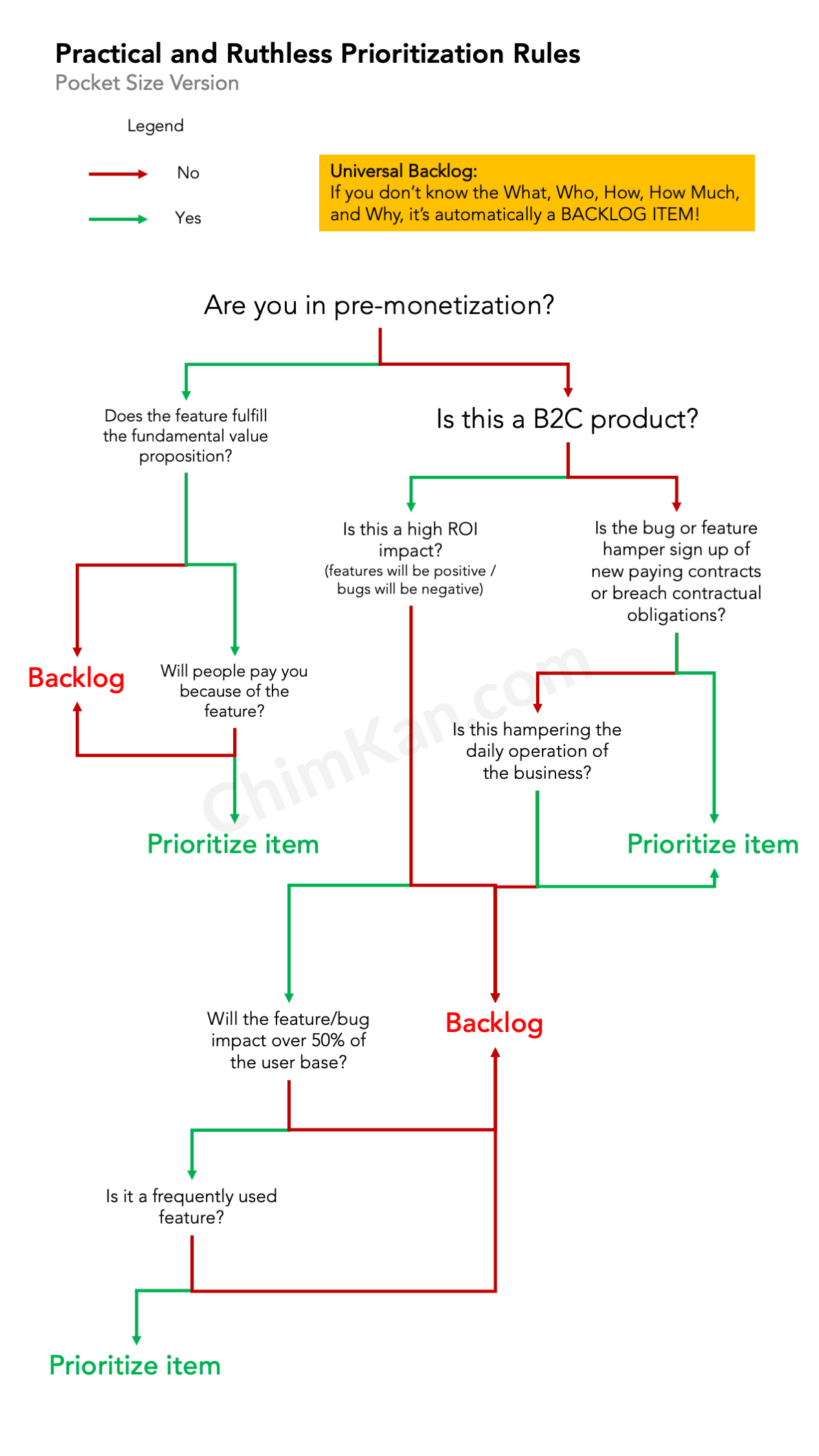Practical and Ruthless Prioritization Rules

One of the biggest challenges for Product Managers is to prioritize features or bugs. Choosing what goes first can have a significant impact on all businesses. Unfortunately, there are very few opportunities where you will be able to satisfy all your stakeholders. But you can apply a few rules that can help you in most scenarios you will face as a PM.
The first rule is that if you don't have the necessary information such as What, Who, How, How much, and Why, you will need to complete your scope work. A bug that you don't know who is being impacted or a new feature that you don't know the reasons to have is not worthy of pursuing. You will not be able to communicate why they should be prioritized or backlogged.
It sounds obvious when you are developing a new product - it does not matter if it is for a startup or an existing company. Always give more priority to features that can bring you short-term and immediate value to your users and company over the longer-term benefits. For example, if you cannot launch something to monetize and your startup is cash strapped, you won't have tomorrow to build the perfect solution. The same applies to larger organizations. If you don't show results early, executives may lose patience or faith in the project.
B2C and B2B business requirements are fundamentally different. B2C customers can quit your product at any time. B2B clients are bound to contracts with a longer timeline, and they may have costs to leave your product. I'm not advocating to provide a sub-par service to B2B customers, but that influences prioritization rules.
Finally, this is just a practical and short version of prioritization rules. Some situations are not as straightforward, and you may have to evaluate the prioritization from other metrics, but the following diagram can help you in most cases.

